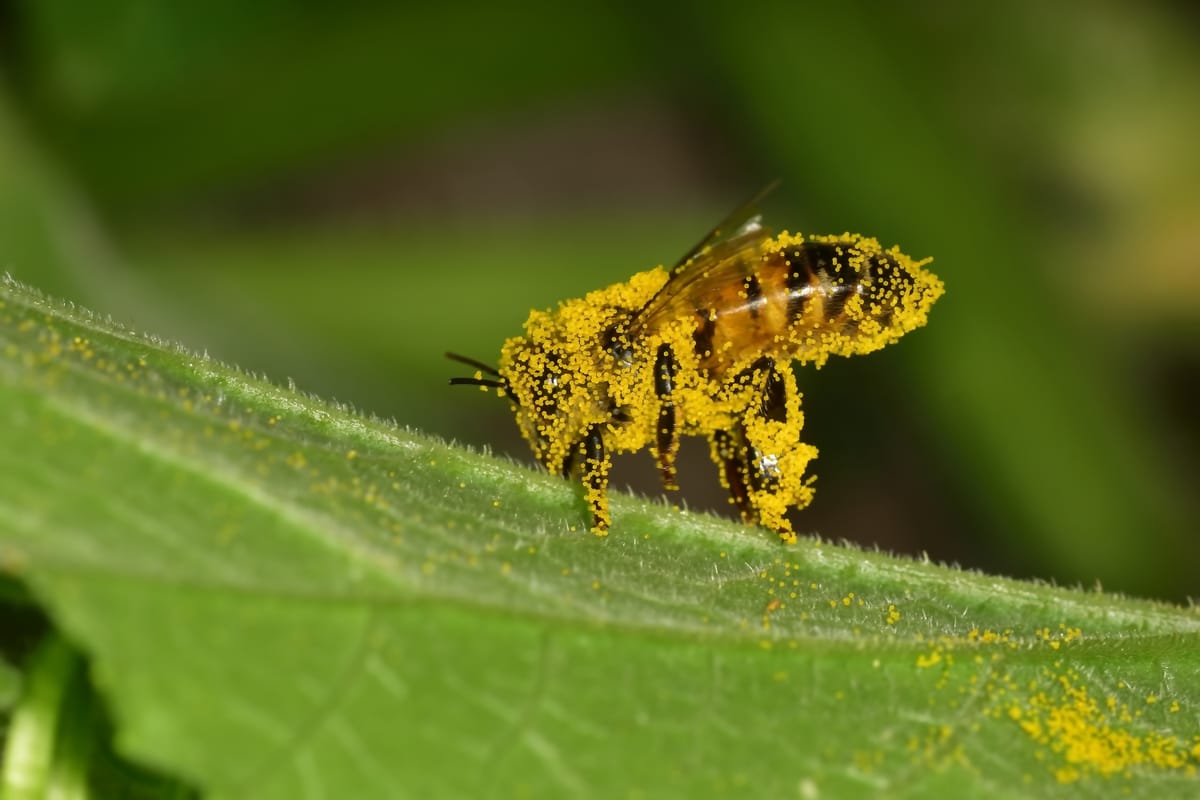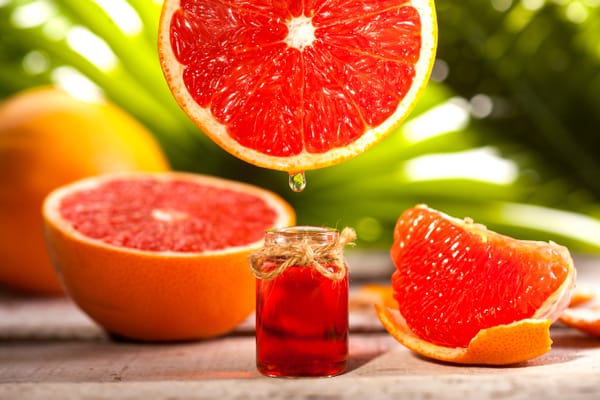What Does Bee Pollen Taste Like? Discover Its Unique Flavor
Curious about what does bee pollen taste like? Learn about its unique, floral flavor and how it can be added to your diet for a nutritious boost.

Have you ever wondered, "What does bee pollen taste like?" If so, you're not alone. Many people are curious about this nutrient-packed superfood collected by our buzzing friends. Bee pollen has an intriguing flavor that's hard to pin down—it's sweet yet earthy, with a hint of bitterness depending on the flowers visited by the bees.
The exact taste can vary widely based on factors such as region and season. But whether you're sprinkling it over yogurt or blending it into smoothies, understanding its distinct flavors will help you appreciate this natural wonder even more.
Table of Contents:
- What Does Bee Pollen Taste Like?
- Nutritional Benefits of Bee Pollen
- How Bees Collect and Process Pollen
- Bee Pollen Products and Uses
- Precautions and Potential Side Effects
- Conclusion
What Does Bee Pollen Taste Like?
The taste of bee pollen is a fascinating topic that's been on my mind lately. As someone who's tried various types of bee pollen, I can tell you that the flavor profiles can vary quite a bit depending on the source.
Factors Affecting Bee Pollen Taste
One of the main factors that influences the taste of bee pollen is the type of flowers the bees visit. Different floral sources can impart distinct flavors, ranging from sweet and floral to slightly bitter or even spicy. The season and location also play a role in the taste of bee pollen. For example, pollen collected in the spring might have a lighter, more delicate flavor compared to pollen harvested in the summer or fall.
Bee Pollen Flavor Profiles
In my experience, high-quality bee pollen often has a sweet, slightly nutty taste with hints of honey. Some varieties can have a subtle floral aroma, reminiscent of the blossoms the bees visited. However, not all bee pollen tastes good. I've come across some that have a strong, pungent flavor or a bitter aftertaste. This can be due to the specific plant sources or the way the pollen was processed and stored.
How to Eat Bee Pollen
If you're new to eating bee pollen, start with a small amount to see how your body reacts. Some people sprinkle bee pollen granules on their breakfast cereal, yogurt, or smoothie bowls for a nutrient boost. You can also mix bee pollen into salad dressings or use it as a topping for toast or oatmeal. The key is to consume it raw to preserve the beneficial enzymes and nutrients.
Nutritional Benefits of Bee Pollen
Beyond its unique taste, bee pollen packs a powerful nutritional punch. This superfood is loaded with vitamins, minerals, antioxidants, and amino acids that can support overall health and well-being.
Vitamins and Minerals in Bee Pollen
Bee pollen is an excellent source of B vitamins, including thiamin, riboflavin, niacin, and folic acid. These nutrients are essential for energy production, brain function, and cell growth. It also contains significant amounts of vitamin C, an antioxidant that boosts immune function and promotes healthy skin. Minerals like calcium, magnesium, iron, and zinc are also present in bee pollen.
Protein Content of Bee Pollen
One of the most impressive aspects of bee pollen is its protein content. It contains all nine essential amino acids that the body needs to build and repair tissues. In fact, bee pollen has a higher protein concentration than most animal-based foods, making it an excellent option for vegetarians and vegans looking to increase their protein intake.
Bee Pollen for Weight Management
Some studies suggest that bee pollen may aid in weight loss efforts. The high nutrient density and fiber content can help curb appetite and promote feelings of fullness. Additionally, the amino acids in bee pollen support muscle growth and recovery, which can be beneficial for those engaging in regular exercise as part of a weight management program.
How Bees Collect and Process Pollen
Have you ever wondered how bees transform flower pollen into the nutritious bee pollen we consume? The process is quite fascinating and involves the hard work of thousands of worker bees.
The Role of Worker Bees in Pollen Collection
Worker bees are the unsung heroes of the hive. These tireless foragers visit countless flowers to gather pollen, which they collect in the pollen baskets on their hind legs. As the bees move from flower to flower, they transfer pollen grains, inadvertently pollinating the plants and enabling them to reproduce. It's a beautiful symbiotic relationship between bees and flowering plants.
Pollen Traps and Harvesting Methods
Beekeepers use special devices called pollen traps to collect bee pollen without harming the bees. These traps are placed at the entrance of the hive and gently remove the pollen pellets from the bees' legs as they return from foraging. The collected pollen falls into a tray or drawer that the beekeeper can easily remove and process for human consumption. This harvesting method ensures a steady supply of fresh, high-quality bee pollen.
Bee Bread: Fermented Pollen in the Hive
Within the hive, worker bees pack the collected pollen into empty comb cells, mixing it with nectar and digestive enzymes to create bee bread. This fermented pollen product serves as a vital protein source for the colony, especially the developing larvae. While humans typically don't consume bee bread, it plays a crucial role in the health and survival of the bee colony. The fermentation process enhances the bioavailability of nutrients and preserves the pollen for long-term storage.
Bee Pollen Products and Uses
The versatility of bee pollen extends beyond its use as a dietary supplement. From fresh bee pollen granules to processed products, there are many ways to incorporate this superfood into your daily routine.
Fresh Bee Pollen vs. Processed Products
Fresh bee pollen is the most natural and unaltered form, retaining its original nutrient profile and enzymes. It's usually sold as small granules that can be eaten directly or added to various dishes. Processed bee pollen products, such as powders or capsules, offer convenience and longer shelf life. However, some of the beneficial compounds may be lost during processing, so it's essential to choose high-quality products from reputable sources.
Incorporating Bee Pollen into Your Diet
One of my favorite ways to enjoy bee pollen is by sprinkling it over my morning yogurt or adding it to smoothies. The subtle sweetness and slight crunch add an interesting dimension to my breakfast routine. You can also use bee pollen as a topping for salads, oatmeal, or even ice cream. Get creative and experiment with different combinations to find what works best for your taste preferences.
Bee Pollen Supplements and Pills
For those who prefer a more concentrated form of bee pollen, supplements and pills are widely available. These products offer a standardized dose of bee pollen's beneficial compounds in a convenient capsule or tablet form. While supplements can be helpful for some individuals, it's always best to consult with a healthcare professional before starting any new supplement regimen, especially if you have allergies or pre-existing health conditions.
Precautions and Potential Side Effects
While bee pollen is generally safe for most people, it's essential to be aware of potential risks and side effects, particularly for those with allergies or sensitivities.
Bee Pollen Allergies and Reactions
Individuals with a history of allergies, especially to bee stings or certain pollens, should exercise caution when consuming bee pollen. Allergic reactions can range from mild symptoms like itching and swelling to more severe anaphylactic reactions. If you experience any adverse reactions after consuming bee pollen, discontinue use immediately and seek medical attention if necessary. It's always best to start with a small amount and gradually increase your intake to assess your tolerance.
Dosage and Consumption Guidelines
When it comes to bee pollen dosage, less is often more. A typical serving size is about one teaspoon per day, gradually increasing to a maximum of one to two tablespoons daily. It's important not to overdo it, as excessive consumption may lead to digestive discomfort or other adverse effects. As with any new food or supplement, listen to your body and adjust your intake accordingly.
Interactions with Medications
Bee pollen may interact with certain medications, particularly blood thinners and anti-inflammatory drugs. The natural compounds in bee pollen can potentially enhance or interfere with the effects of these medications. If you are taking any prescription medications or have a pre-existing health condition, it's crucial to consult with your healthcare provider before adding bee pollen to your diet. They can provide personalized guidance based on your individual needs and circumstances.
Key Takeaway:
Bee pollen's taste varies with the flowers bees visit, ranging from sweet and floral to slightly bitter. High-quality bee pollen usually tastes nutty and honey-like but can sometimes be pungent or bitter. Start with small amounts to test your body's reaction.
Conclusion
So there you have it! The next time someone asks "what does bee pollen taste like," you'll know it's a blend of sweet floral notes with an earthy twist that varies from batch to batch. Whether you're adding it to your morning routine or experimenting in the kitchen, bee pollen offers both unique flavors and impressive nutritional benefits.
Dive into incorporating this powerhouse ingredient into your meals today—you might just find yourself pleasantly surprised by what nature's little workers have created!




